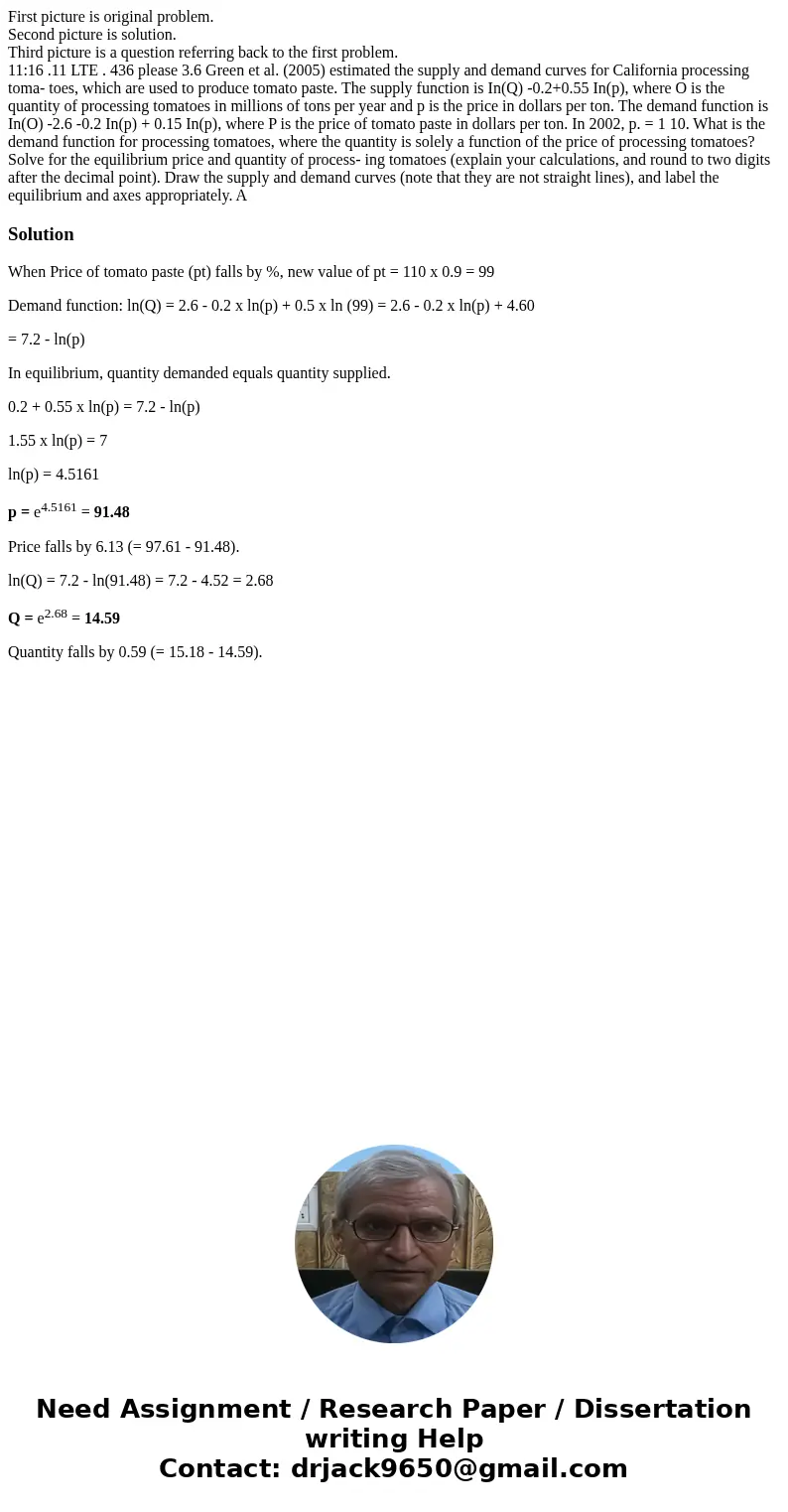First picture is original problem Second picture is solution
First picture is original problem.
Second picture is solution.
Third picture is a question referring back to the first problem.
11:16 .11 LTE . 436 please 3.6 Green et al. (2005) estimated the supply and demand curves for California processing toma- toes, which are used to produce tomato paste. The supply function is In(Q) -0.2+0.55 In(p), where O is the quantity of processing tomatoes in millions of tons per year and p is the price in dollars per ton. The demand function is In(O) -2.6 -0.2 In(p) + 0.15 In(p), where P is the price of tomato paste in dollars per ton. In 2002, p. = 1 10. What is the demand function for processing tomatoes, where the quantity is solely a function of the price of processing tomatoes? Solve for the equilibrium price and quantity of process- ing tomatoes (explain your calculations, and round to two digits after the decimal point). Draw the supply and demand curves (note that they are not straight lines), and label the equilibrium and axes appropriately. A Solution
When Price of tomato paste (pt) falls by %, new value of pt = 110 x 0.9 = 99
Demand function: ln(Q) = 2.6 - 0.2 x ln(p) + 0.5 x ln (99) = 2.6 - 0.2 x ln(p) + 4.60
= 7.2 - ln(p)
In equilibrium, quantity demanded equals quantity supplied.
0.2 + 0.55 x ln(p) = 7.2 - ln(p)
1.55 x ln(p) = 7
ln(p) = 4.5161
p = e4.5161 = 91.48
Price falls by 6.13 (= 97.61 - 91.48).
ln(Q) = 7.2 - ln(91.48) = 7.2 - 4.52 = 2.68
Q = e2.68 = 14.59
Quantity falls by 0.59 (= 15.18 - 14.59).

 Homework Sourse
Homework Sourse